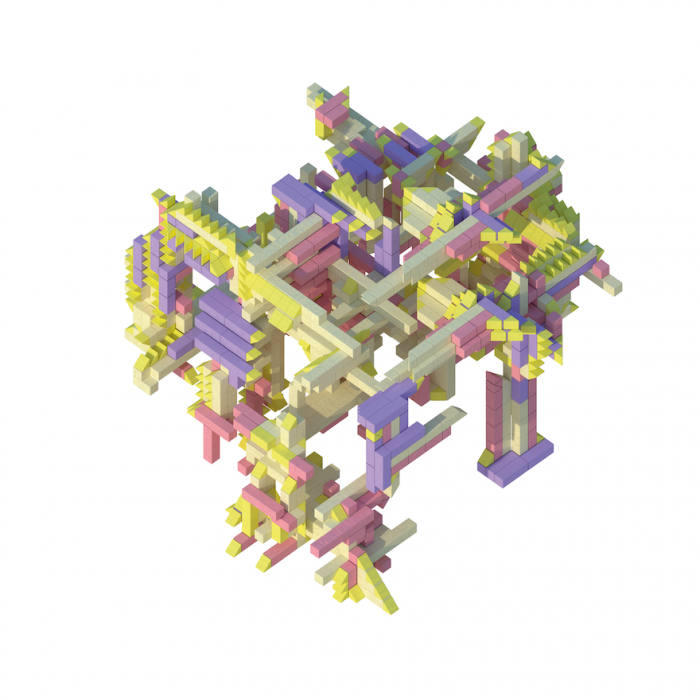The idea of a master builder who creates structures of great genius lay at the heart of Ayn Rand’s novel The Fountainhead. But award-winning architectural design studio iheartblob is happy to turn the idea on its head.
“Architecture is a profession of hierarchies. ‘Master Builders’ are funded by stakeholders with narrow focus (often upon profitability) to mimic traditional forms,” says Shaun McCallum, co-founder of iheartblob. “As the world around us has changed, this has left architectural design behind, often most negatively affecting those who inhabit architecture.”
iheartblob follows a decentralised approach to architecture, which it believes offers a unique way forward in which ownership transfers to a more diverse group of stakeholders. “Creativity can emerge from the interconnectedness of different ideas,” McCallum explains. “The roles between architect, inhabitant and investor are melded into a more productive design tour de force.”
This idea finds expression in the studio’s Fungible/Non-Fungible Pavilion, which was the winning proposal of The Tallinn Architecture Biennale’s 2022 Installation Programme Competition. The pavilion will be built opposite the Museum of Estonian Architecture this year.
Anyone with cryptocurrency and a burning desire to contribute to the built environment can contribute a digital ‘block’ to the project, which is a hybrid of a physical structure in the real world and a digital building block with the investor’s name on it, so to speak. A ground-breaking endeavour that draws in local communities and craftspeople, the pavilion stands as a testament to what could be if architectural design is outsourced to the collective.
“One of the nice things about this pavilion is the community-oriented design model, which aims to include as many participants as possible, meaning the pavilion itself can be as large as the participants make it,” McCallum says. A large component of a system that allows everyone to participate is materiality. “By aligning our design system with timber, we were able to conceptualise sustainably but also use the versatility and robustness of timber construction. In terms of colour palette, the pastels are a way in which we can break the traditional notions of architecture and more specifically the traditional notion of the architectural pavilion.”
iheartblob has built an NFT generative tool to allow people to design and ‘mint’ their own building blocks in the real world. But who owns what?
“There are two sides to the ownership within this project,” McCallum explains. “iheartblob provides the system, the framework, that allows the community (close by or far away) to creatively contribute parts to the structure. Those who contribute parts will own the digital NFT of their contribution, which directly funds the physical construction of the component. Owners will then have the opportunity to sell these parts to other community members to further generate wealth within the community from an architecture that is both reflective of the community and can work for the community.”
It’s a bit like a conductor overseeing an orchestra – the architect is a systems designer who weaves together innovative technology and human creativity, producing a work that is greater than the sum of its parts. It’s blockchain come to life in a sense – as more transactions are executed, the shape of the structure changes and evolves.
McCallum says the use of blockchain technologies has already begun to revolutionise the world around us, notably through reappropriating the financial value of various industries, including the creative industries. “The simple potential of distributed ownership verified on chain alongside royalties completely changes the narrative artists have been living with for centuries,” he says. “We’re firm believers in the decentralisation of an immersive internet where social media, video games, cities and pretty much everything you can think about can be done in hybrid or fully virtual spaces.”
What about the environmental impact of NFTs?
McCallum says blockchain is not an inherently energy-intensive technology, unlike the production of Bitcoins, for example. “Our pavilion will use a new type of blockchain technology: Proof of Stake,” he says. “This limits the environmental impact of minting NFTs to that of a Tweet. This type of chain is the antithesis of traditional Proof of Work chains like Bitcoin, which require pure computing power. In addition, we have given concern to the materiality of our material choice and will work with sustainable, locally sourced timber.”
McCallum believes this project is the first step towards empowering citizens to become stakeholders of their own built environment. It’s egalitarian, conceptually interesting, even visionary. Ayn Rand is probably turning in her grave.
Read more:
The Hive pavilion replicates the ways bees communicate.
4 projects that cleverly integrate digital fabrication into architecture.
How is virtual reality changing the architecture industry?
Credits: iheartblob













